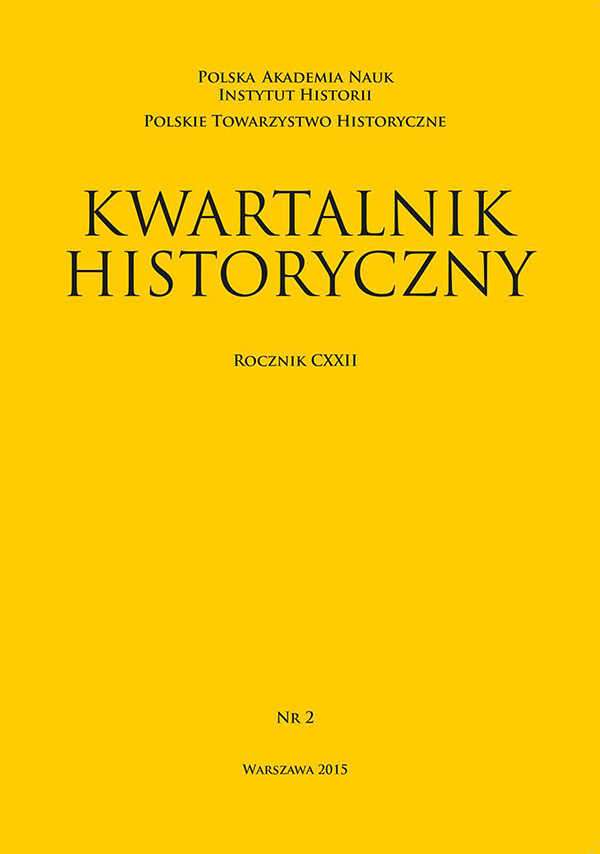Liczebność Żydów w Wielkim Księstwie Litewskim w XVII w.
DOI:
https://doi.org/10.12775/KH.2015.122.2.02Abstrakt
The Number of Jews in the Grand Duchy of Lithuania during the Seventeenth Century
The basic sources of this attempt to determine the number of Jews in the Grand Duchy of Lithuania during the seventeenth century include treasury documents up to now used only on the margins of studies about the demography of the Jews, i.e. predominantly registers of the podymne (hearth) and the pogłówne (poll) taxes and, as auxiliary material, protocols of the sessions of the Lithuanian Waad ( Jewish Sejm). Such sources made it feasible to determine that in 1650 the Grand Duchy was inhabited by about 18 900 Jews, i.e. 0,51% of the total population and 3,5% of the town dwellers. The unsatisfactory state of the preservation of treasury sources from the second half of the seventeenth century means that it is impossible to even propose an approximate number of the Jews. A comparison of fragmentary data makes it feasible to draw conclusions concerning trends of the demographic growth of the Jewish population and to ascertain that in certain regions the impact of losses associated with wars waged in the mid-seventeenth century was still felt in the second half of the seventeenth century. This phenomenon, however, was not identical across the entire state. It should be emphasised that not all the kahals were destroyed to the same degree; moreover, some grew due to increased migration. The demographic growth of the Jewish population was much speedier than that of the Christian population, and demographic losses were eliminated more rapidly. The reasons for this state of affairs include: 1) that fact that the smallest losses during the armed conflicts of the mid-seventeenth century were suffered by areas with the greatest concentrations of the Jewish population, 2) favourable conditions for the economic progress of the Jewish population, and 3) a relatively high birth rate.
Pobrania
Opublikowane
Jak cytować
Numer
Dział
Statystyki
Liczba wyświetleń i pobrań: 459
Liczba cytowań: 0



